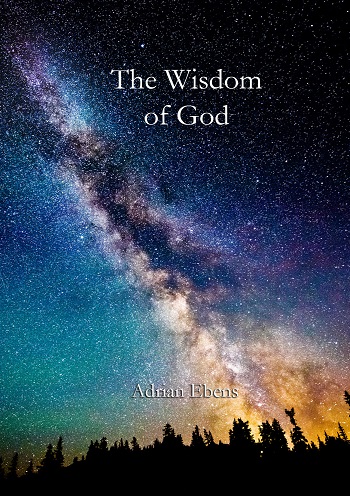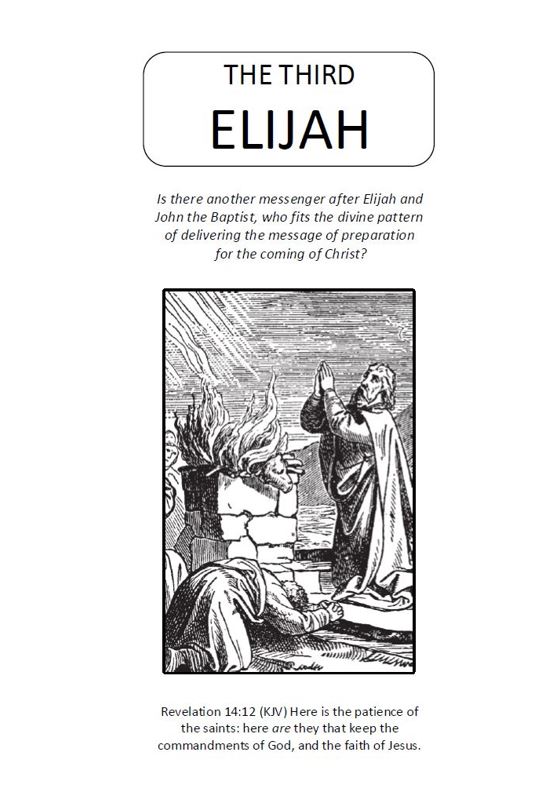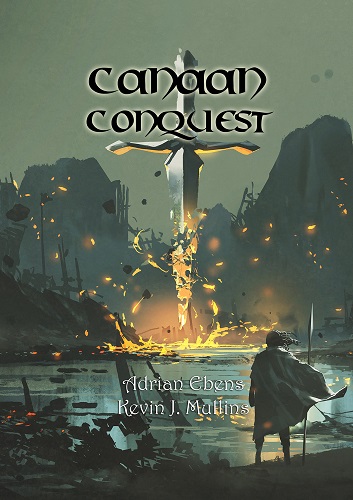The Begotten Son in the Nicene Creed vs Illegitimacy of Athanasian Creed
When we tell people that we believe that Jesus was begotten of God in eternity, we are often met with puzzlement. “Huh? What are you talking about?” To them it seems we are speaking an alien language.
Others take offense to the idea:“To say Christ is begotten is to deny Christ’s divinity, making Him less than His Father!” It is seen, at least in Adventism, as an odd idea that no one believes. Such ideas betray how insular our thinking is, how ignorant it is of Church history. It is normal for humans to think that ideas held in common today are how it has always been. This is absolutely not the case, and that is why history is so important to study.
The idea of Jesus being begotten was the fundamental teaching of the Apostolic Church. Remember, God the Father was known by the Jews and by Gentiles interested in the Jewish religion. But who was this new person claiming to be His only-born Son, coming down from Heaven? How was He worthy to be worshipped? Being begotten was central to understanding His preexistent relationship to God the Father. God created all things through His only-begotten Son (Hebrews 1:2). There was no way you could defend Christ’s divinity by saying He is one person out of a 3-person God – that would have gotten you nowhere with the Jews who were the first converts to Christianity.
But how can we prove that the early church believed that Jesus is begotten? Because it is the centerpiece of both the Nicene Creed (325 AD) and the Constantinople Creed (381 AD)!
What is the Nicene Creed? For those who don’t know, the Nicene Creed is the most accepted creed there is. Here is what the Encyclopedia Britannica says:
Nicene Creed, a Christian statement of faith that is the only ecumenical creed because it is accepted as authoritative by the Roman Catholic, Eastern Orthodox, Anglican, and major Protestant churches. The Apostles’ and Athanasian creeds are accepted by some but not all of these churches.
And what does this short statement say that was voted on and accepted by the Greek-speaking bishops of the ancient Christian world?
| First Council of Nicaea (325) | First Council of Constantinople (381) |
|
We believe in one God, the Father Almighty, Maker of all things visible and invisible. |
We believe in one God, the Father Almighty, Maker of heaven and earth, and of all things visible and invisible. |
|
And in one Lord Jesus Christ, the Son of God, begotten of the Father [the only-begotten; that is, of the essence of the Father, God of God,] Light of Light, very God of very God, begotten, not made, consubstantial with the Father; |
And in one Lord Jesus Christ, the only-begotten Son of God, begotten of the Father before all worlds (æons), Light of Light, very God of very God, begotten, not made, consubstantial with the Father; |
|
By whom all things were made [both in heaven and on earth]; |
by whom all things were made; |
|
Who for us men, and for our salvation, came down and was incarnate and was made man; |
who for us men, and for our salvation, came down from heaven, and was incarnate by the Holy Ghost and of the Virgin Mary, and was made man; |
https://en.wikipedia.org/wiki/Nicene_Creed
Right there we see that the one God is who? The Father. It doesn’t say a union of three persons. And then it says that the one God has one Son, “begotten of the Father” “before all the worlds”. How much clearer could it be? Though this creed is much shorter than our modern creeds, still it takes time to address proponents of those who claim ‘begotten means created’ by saying “light of light, begotten, not made.”
It is strange that when some people hear that we believe in Christ being begotten, they say that is Arianism! Yet this Nicene Creed, which says explicitly that Christ is begotten, was written specifically against Arianism! So how can someone be Arian for believing what this most orthodox of creeds says?
So in the eyes of the early church, what idea would be alien to them: Jesus being begotten, or Jesus being unbegotten? Oh how times have changed! And yet… the same people who believe in an unbegotten Jesus say they agree with these creeds! For example:
A Statement by SDAs to the Protestant/Evangelical World:
I. IN COMMON WITH Conservative Christians AND THE HISTORICAL PROTESTANT CREEDS, WE BELIEVE—1. That God is the Sovereign Creator, upholder, and ruler of the universe, and that He is eternal, omnipotent, omniscient, and omnipresent.
2. That the Godhead, the Trinity, comprises God the Father, Christ the Son, and the Holy Spirit.
3. That the Scriptures are the inspired revelation of God to men; and that the Bible is the sole rule of faith and practice.
4. That Jesus Christ is very God, and that He has existed with the Father from all eternity.
5. That the Holy Spirit is a personal being, sharing the attributes of deity with the Father and the Son.
etc.(Questions on Doctrine pg. 21, 1954)
The book Questions on Doctrine then lists all the things that it agrees in common with other denominations. It doesn’t specifically say we believe everything in the Historical Protestant Creeds, just that we believe these following points from the Historical Protestant Creeds. Jesus being begotten isn't on the list. Point 4 seems to say that we don't believe He is begotten. So does that mean we reject the begotten part of the Nicene Creed? There isn't much more to the Nicene Creed besides that part!
There are more examples of the Adventist Church saying they agree with this creed. Through dialogues, the Adventist Church had with the World Council of Churches, a German Lutheran theologian published a paper where he explained how he saw Adventism’s relationship with the ecumenical movement. Adventists’ agreed with this document, and reprinted it in Ministry Magazine and in a book entitled So Much in Common: Documents of Interest in the Conversation between the World Council of Churches and the 7th Day Adventist Church. In it is claimed that the Adventist Church agrees with the Nicene Creed:
The member churches of the World Council of Churches and Seventh-day Adventists are in agreement on the fundamental articles of the Christian faith as set forth in the three ancient church symbols Apostolicum, Nicaeno-Constantinopolitum [Nicene-Constantinople], Athenasium. This agreement finds expression in unqualified acceptance of the doctrines of the Trinity and the two natures. (https://www.ministrymagazine.org/archive/1973/02/seventh-day-adventists-and-the-world-council)
It seems that even the World Council of Churches is more fixated on the Adventist Church being Trinitarian and Christ having two natures than on the begotten issue. Why no mention of it? Does the World Council of Churches know that the official position of the SDA Church is that it doesn’t believe in Christ being begotten before the worlds, thus making it not in agreement with those creeds? Are the Sunday churches also not reading these creeds closely?
If anyone has tried to share the idea of Christ being begotten to our Sunday church brethren, I think often you will meet with the same sort of puzzlement that you get with Adventists. Why is this? Why do churches say they agree with these hugely influential and important historical creeds but not actually seem to read what that creed says? They seem to think that the Creed is all about being Trinitarian, but the Trinity is not even mentioned in the first of the two creeds mentioned above; it is only mentioned in the much later (at least 400 AD) Athanasian Creed – who’s highly suspect character I will discuss later.
Here is another example of an Adventist document, this time from the Biblical Research Institute, saying that we are in agreement with “the great creedal statements of Christendom, including the Apostles’ Creed, Nicea…” He then says Adventist used to not agree with these creeds because they were “semi-Arian”.
Nature of God. A reading of the above statements will show that with respect to their doctrine of God Seventh-day Adventists are in harmony with the great creedal statements of Christendom, including the Apostles’ Creed, Nicea (325), and the additional definition of faith concerning the Holy Spirit as reached in Constantinople (381). However, such was not always the case. Many early Adventists came from churches holding to what is described as a semi-Arian position on the nature of Christ, making it the predominant view for almost a half-century. Shortly before the close of the 19th century, however, as theological development took place, and with the encouragement of Ellen White, the church moved to a full trinitarian position. Other classical teachings that came to be designated as heresies, such as forms of monarchianism and modalism, have not troubled Adventists.
Jesus as the Christ. Adventist Christology, introduced in the statement on the Son, follows widely accepted Christian norms with regard to the nature of Christ…This statement in itself should be sufficient to distinguish Adventists from other groups such as Jehovah’s Witnesses and Mormons, with whom Adventists are sometimes confused.
(George Reid, Seventh-day Adventists: A Brief Introduction to their Beliefs, Biblical Research Institute)
The position that was held by the early Adventists was that Jesus was begotten, not created, and Reid calls them “semi-Arian.” But can that be why the early church was against those creeds, when those creeds also taught that Christ was begotten? Are those creeds semi-Arian? Nobody would say so. Could it be that the early Adventists had a more nuanced position than what is stated by George Reid? The reason they didn't say they agreed with the Nicene Creed is because they were against all creeds on principle.
"The first step of apostasy is to get up a creed, telling us what we shall believe. The second is, to make that creed a test of fellowship. The third is to try members by that creed. The fourth to denounce as heretics those who do not believe that creed. And fifth, to commence persecution against such." (J.N. Loughborough, RH Oct 8, 1861)
Regardless, in George Reid's paper there is, once again, no explicit talk of Jesus being begotten and whether we agree to it or disagree to it. This is again odd. A lot of talk around the issue, but not a direct discussion of it. None of the Sunday churches question the Adventist church on this. Being Trinitarian is enough to say you are in agreement with the ancient creeds. In fact, the same question could be put to the Sunday churches. You say you agree with the ancient creeds, but do you teach Jesus is begotten? Or does it strike you as undermining his divinity?
Adventist history though is particularly striking. Here we have a church moving away from the idea that Jesus is begotten, yet saying they are more in line with the ancient creeds, yet those ancient creeds emphasize Jesus being begotten, not that God is made up of three persons.
I am not writing this to say that I believe in creeds. I am sharing this just to show how confused mainstream Christianity is. Could all this be part of what God is trying to warn us about when He says “Babylon is fallen, is fallen”, that system of doctrinal confusion?
- Imagine you are a new Christian and you want to know what Christianity basically teaches. There are so many different denominations, so you think: “I want to know what they all agree on first, not what they vary in.” So you are pointed to the Nicene Creed. You read that it is focused on the begotten Son, and then you mention this to your Christian friends, and they don’t know what you are talking about! But isn’t that what you all agree on?!
Finally that takes us to the last of three great creeds, the Athanasian Creed, a creed that doesn’t have any right to sit with the former creeds. Why? Because it was not voted by any church council. We don’t even know where it came from, or who wrote it. It just…came to be accepted over time. I suggest everyone read the Athanasian Creed Wikipedia page and shake your head at its illegitimacy.
Here are some of its main points: Nicene Creed and its brother, the Constantinople Creed, and the creeds of that century, were all written in Greek. They were voted in by Greek speaking bishops in official church councils. We know when and at what council they were made.
For the Athanasian Creed there was no council, no vote. And it was was not even written by Athanasius – his name was put on it to give it legitimacy. Here are some reasons why it is commonly accepted that he didn’t write it:
It has since been widely accepted by modern scholars that the creed was not authored by Athanasius, that it was not originally called a creed at all and that Athanasius's name was not originally attached to it. Athanasius's name seems to have become attached to the creed as a sign of its strong declaration of Trinitarian faith. The reasoning for rejecting Athanasius as the author usually relies on a combination of the following:
- The creed originally was most likely written in Latin, but Athanasius composed in Greek.
- Neither Athanasius nor his contemporaries ever mention the Creed.
- It is not mentioned in any records of the ecumenical councils.
- It appears to address theological concerns that developed after Athanasius died (including the filioque).
- It was most widely circulated among Western Christians.
The use of the creed in a sermon by Caesarius of Arles, as well as a theological resemblance to works by Vincent of Lérins, point to Southern Gaul [France] as its origin. The most likely time frame is in the late fifth or early sixth century AD, at least 100 years after Athanasius lived. The Christian theology of the creed is firmly rooted in the Augustinian tradition and uses the exact terminology of Augustine's On the Trinity (published 415 AD). In the late 19th century, there was a great deal of speculation about who might have authored the creed, with suggestions including Ambrose of Milan, Venantius Fortunatus and Hilary of Poitiers.
The 1940 discovery of a lost work by Vincent of Lérins, which bears a striking similarity to much of the language of the Athanasian Creed, has led many to conclude that the creed originated with Vincent or his students. For example, in the authoritative modern monograph about the creed, J. N. D. Kelly asserts that Vincent of Lérins was not its author but that it may have come from the same milieu, the area of Lérins in southern Gaul.
It doesn’t sound good when it is claimed to be written by someone who lived a hundred years earlier. I don't think it is wrong to say that someone lied about its origin. This is reminiscent of other Papal deceptions to gain legitimacy for a new idea that had no historical or Biblical backing, like the Donation of Constantine, the Symachian Foregeries (around the time of the Athanasian Creed), and the False Decretals which heavily influenced Gratian’s Decretum and Thomas Aquinas – thus spurious quotes from the Church Fathers entered into Catholic logic and ideology.
Often the Roman Pontiff and his Latin theologians used forgeries in their debates with their Greek counterparts:
When Greek Christians tried to discuss issues with the Church in Rome, the popes often used forged documents to back their claims. This happened so frequently that for 700 years the Greeks referred to Rome as "the home of forgeries". (https://www.catholicconcerns.com/pages/forged)
See also: Forgeries and the Papacy: The Historical Influence and Use of Forgeries in Promotion of the Doctrine of the Papacy by William Webster
For more info on this, watch this excellent video: Papal Forgeries: A Road to Schism
Knowing all this history, let us look at this highly suspect “creed” from which the Trinity in its modern form originated. Here is what the text actually says:
Whosoever will be saved, before all things it is necessary that he hold the Catholic faith. Which faith unless every one do keep whole and undefiled, without doubt he shall perish everlastingly. And the Catholic faith is this: that we worship one God in Trinity, and Trinity in Unity; neither confounding the Persons, nor dividing the Essence. For there is one Person of the Father; another of the Son; and another of the Holy Ghost. But the Godhead of the Father, of the Son, and of the Holy Ghost, is all one; the Glory equal, the Majesty coeternal. Such as the Father is; such is the Son; and such is the Holy Ghost. The Father uncreated; the Son uncreated; and the Holy Ghost uncreated. The Father infinite; the Son infinite; and the Holy Ghost infinite. The Father eternal; the Son eternal; and the Holy Ghost eternal. And yet they are not three eternals; but one eternal. …
And yet not three Lords; but one Lord. For like as we are compelled by the Christian verity; to acknowledge every Person by himself to be God and Lord; So are we forbidden by the Catholic religion; to say, There are three Gods, or three Lords. The Father is made of none; neither created, nor begotten. The Son is of the Father alone; not made, nor created; but begotten. The Holy Ghost is of the Father and of the Son; neither made, nor created, nor begotten; but proceeding. So there is one Father, not three Fathers; one Son, not three Sons; one Holy Ghost, not three Holy Ghosts. And in this Trinity none is before, or after another; none is greater, or less than another. But the whole three Persons are coeternal, and coequal. So that in all things, as aforesaid; the Unity in Trinity, and the Trinity in Unity, is to be worshipped. He therefore that will be saved, let him thus think of the Trinity.
Furthermore, it is necessary to everlasting salvation; that he also believe faithfully the Incarnation of our Lord Jesus Christ…
Firstly we notice that, in contrast to the conciseness of the earlier Nicene Creed, here we have redundancy and pedantry. The focus is on their characteristics of worthiness… all three are coequal, coeternal, equal glory, uncreated, infinite, eternal, are Lords, etc. Also notice that we are “forbidden by the Catholic religion to say ‘there are 3 Gods or 3 Lords,” – not forbidden by the Bible or by God Himself, but by “the Catholic religion.” Here we start to see the arbitrary, human nature of this creed, the movement toward Papal authority and force. It is no coincidence this was promoted in France (Gaul), the first son of the Papacy: it was Clovis and the Franks that established Papal power in Western Europe. Were they brandishing this spurious document as they built up to the start of the Papacy's 1200 year rule beginning in 538 AD?
Towards the end of this section of the Athanasian Creed, we see what we are looking for: that the Father is not begotten, while Jesus is begotten (also that the Holy Spirit proceeds from them, but that is another issue). This point was the main focus of the earlier Nicene Creed; here it is pushed to the bottom, and passed by briefly. No more “light of light” and “very God of very God” to help explain how Jesus was begotten. And then after this brief mention it is back to talking about not three, but one, etc. YET STILL: it says Jesus was begotten, not made.
As time progresses, the begottenness of Jesus has been lost – even though the most famous verse in Christianity, John 3:16, is centered around it. As Christianity fell away from the truth into the Dark Ages without the Bible and became more invested in idols, vigils, saints, and monkhood, so we also see investment in the Trinity and Jesus being equal, according to human performative standards, with the Father – meaning there is a movement to being unbegotten. Fascinatingly, the same movement from begotten to unbegotten happened in Adventism.
There is much more that could be researched, especially on the forgeries and the influence of the “false decretals” on Gratian and Aquinas, but I want the reader to get this main point: when we share the begotten Son, we can point to Him being there in the Nicene Creed, and then it is not only us who are speaking, but that whole great church council. It is an appeal to authority of the most powerful type, especially because most people agree that it represents early Christianity and (nominally) agree with it. It can give us confidence when people try to paint us as being loners who invented this new doctrine – we did not; and we are not alone on this.
-
Remember these words in the Nicene Creed: "We believe… in one Lord Jesus Christ, the Son of God, begotten of the Father [the only-begotten; that is, of the essence of the Father, God of God,] Light of Light, very God of very God, begotten, not made…"
May God help us in sharing the amazing truth of Christ being begotten from the Father, that He is equal to Him, through inheritance.
Jesus then said to them, `If God were your father, ye were loving me, for I came forth from God, and am come; for neither have I come of myself, but He sent me… (John 8:42 YLT)
It is true that there are many sons of God; but Christ is the "only begotten Son of God," and therefore the Son of God in a sense in which no other being ever was or ever can be. The angels are sons of God, as was Adam (Job 38:7; Luke 3:38), by creation; Christians are the sons of God by adoption (Rom. 8:14, 15); but Christ is the Son of God by birth. The writer to the Hebrews further shows that the position of the Son of God is not one to which Christ has been elevated, but that it is one which He has by right. He says that Moses was faithful in all the house of God, as a servant, "but Christ as a Son over His own house." Heb. 3:6. [13] And he also states that Christ is the Builder of the house. Verse 3. It is He that builds the temple of the Lord, and bears the glory. Zech. 6:12, 13. (EJ Waggoner, Christ our Righteousness)
God so loved the world, that he gave his only-begotten Son, -not a son by creation, as were the angels, nor a son by adoption, as is the forgiven sinner, but a Son begotten in the express image of the Father’s person… (ST May 30, 1895)
For more info on why Jesus being begotten is so important, please read the first 4 chapters of The Wisdom of God

https://maranathamedia.com/book/view/wisdom-of-god





